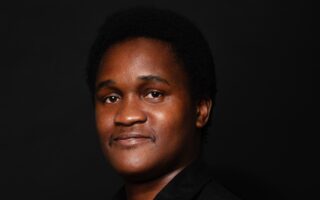Getting out of an abusive situation is one thing, but as Jessica Combes discovered, the road to recovery is long, winding, and fraught with obstacles
There is a brief moment when a person in an abusive relationship makes the decision to get out and live, or roll over and die. For Jessica Combes, her moment came on a Saturday morning in March 2013 after a five-year build up. She had been living with her partner in Australia for just over 12 months after moving Down Under to give the relationship the old college try after four tumultuous years of doing it long distance.
“In the year prior, he had put me through every category of abuse one person in a relationship can do to another, his behaviour often fuelled by alcohol. I knew if I didn’t get out immediately, I wasn’t going to see another Christmas,” she said.
On that day, he started drinking earlier than usual and his temper was even more erratic. They argued. He threatened her safety. She went to another room in the house, he went to his PlayStation. A bit later she heard the car pull out and he was gone.
“I was just done. Within three hours, I had a plane ticket booked. Within 36 hours I had packed the few items I needed. Within 72 hours my flight took off around the same time he would have pulled into the driveway after work. I was out,” said Combes.
A question that many domestic violence survivors are asked is, “Well, why didn’t you just leave?” There are so many nuanced reasons why somebody cannot just pack up and leave.
Abusers don’t show their true colours immediately; the abuse is insidious. They are very often charming and persuasive and, in the beginning, can convince the other person that a relationship with them would be a safe space. Slowly, they start to isolate their partners from friends and family until they no longer feel like they have a network of people they can ask for help. They also play the part of the perfect partner in public, so even if their victim did want to reach out for help, they would battle to find a confidante who believes them.
According to The Hotline, a service provider to help survivors of domestic violence, other reasons include being ashamed to admit that they’ve been or are being abused and feeling that they’ve done something to deserve the abuse; fearing the consequences if they decide to leave their relationship; a lack of resources because they’re financially dependent on their partner or have been denied the opportunity to work; and fearing a negative impact on immigration status. These stressors are magnified if children are involved. Combes counts herself lucky – she could selfishly look out for herself and nobody else. She made a completely clean break.
She added, “Nine years later, the residue of my experience with him amounts to slamming doors making me nervous, not feeling comfortable if somebody stands over me when I’m seated and feeling extremely cold when I’m under extreme emotional duress.”
The years since leaving him have been equally tough. Women’s Aid, a national charity working to end domestic abuse against women and children, emphasises the need for self-care as an important first step.
“Survivors often feel stupid for being in that situation in the first place and for struggling to get out, and then they feel guilty for wanting to treat themselves gently. Plus, nobody told me I’d have sudden bursts of soul-shuddering ugly crying – in the bath, in bed, and one time in my car in a crowded parking lot,” said Combes, adding, “It can take some time, but I found the best way was to start simply, such as making time and space for myself each day, doing something enjoyable, journaling and getting enough sleep.”
Once she felt somewhat pieced back together, the hard work started. She started to read voraciously to understand the dynamics of domestic abuse and then examine her experience through that lens. She read articles and trawled through YouTube. She revisited her relationship to better understand her blind spots and how she let herself get hooked for so long. She dug deep to find the limiting beliefs and mental blocks and worked towards resolving them with professionals and a few close friends.
“I reassessed my values and my boundaries and got clear on what my non-negotiables are. Asserting my boundaries seems to be an ongoing lesson, but each time I say, ‘No, thank you’ or ‘I don’t want to,’ I get better at it,” she said.
She said that from there she revisited her strengths, skills, and abilities to start creating a vision for her future. “I had to stop seeing myself through his eyes. I got feedback from the people I trust the most – I asked them why they liked me or what they thought my best quality was and wrote them down for the days I need the reminder. I decided on the person I want to be, the career I want to have, the relationships I value, and what my next relationship looks like, and I pursued every opportunity that would bring me closer to that vision.”
She left him when she was 30 and this year, she turned 40. When considering how she felt entering this decade versus the previous one, she is hopeful and excited.





